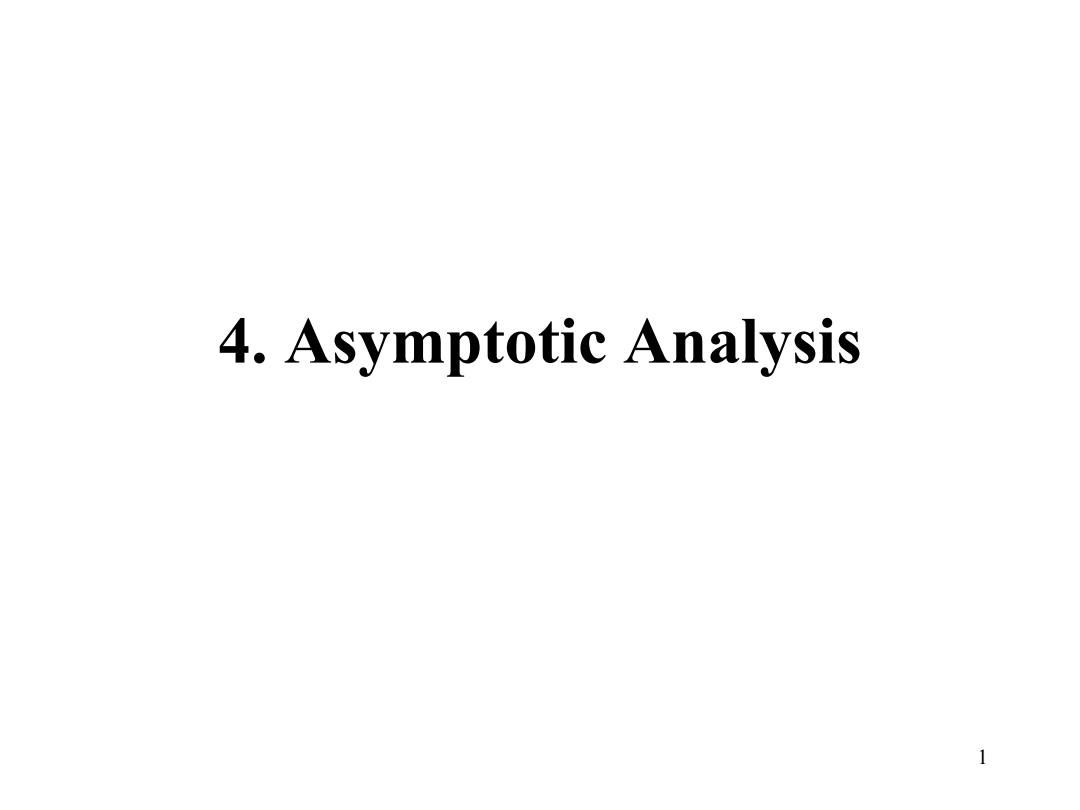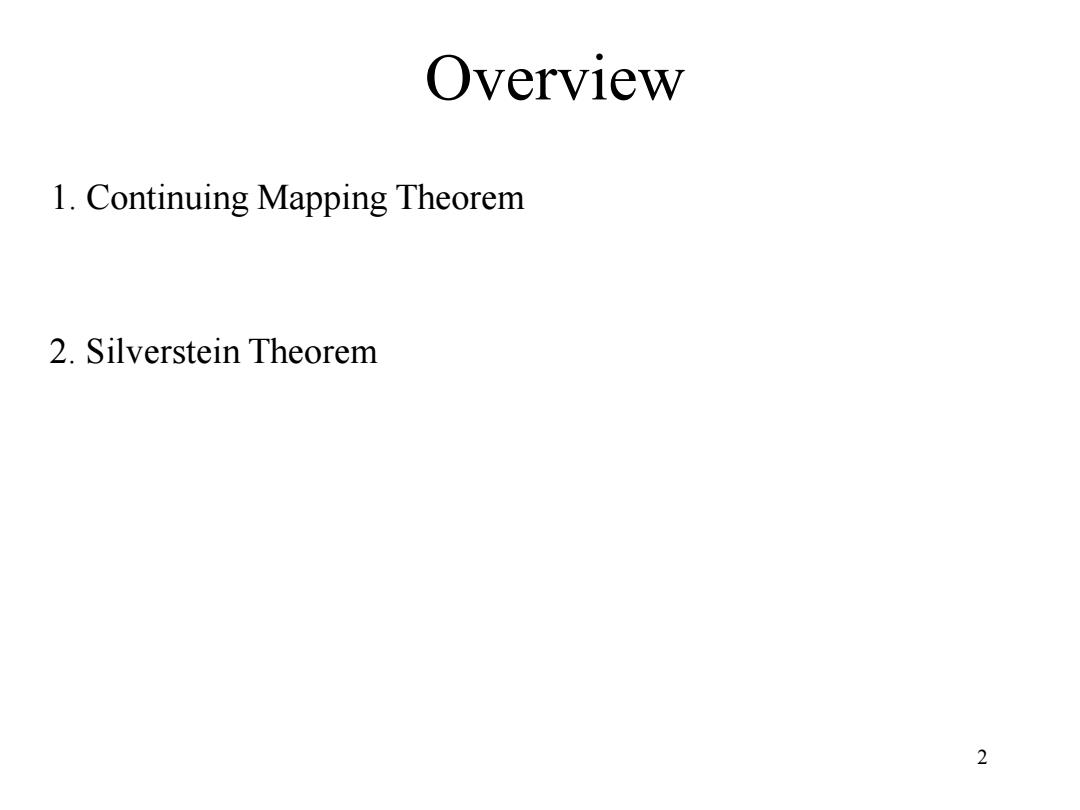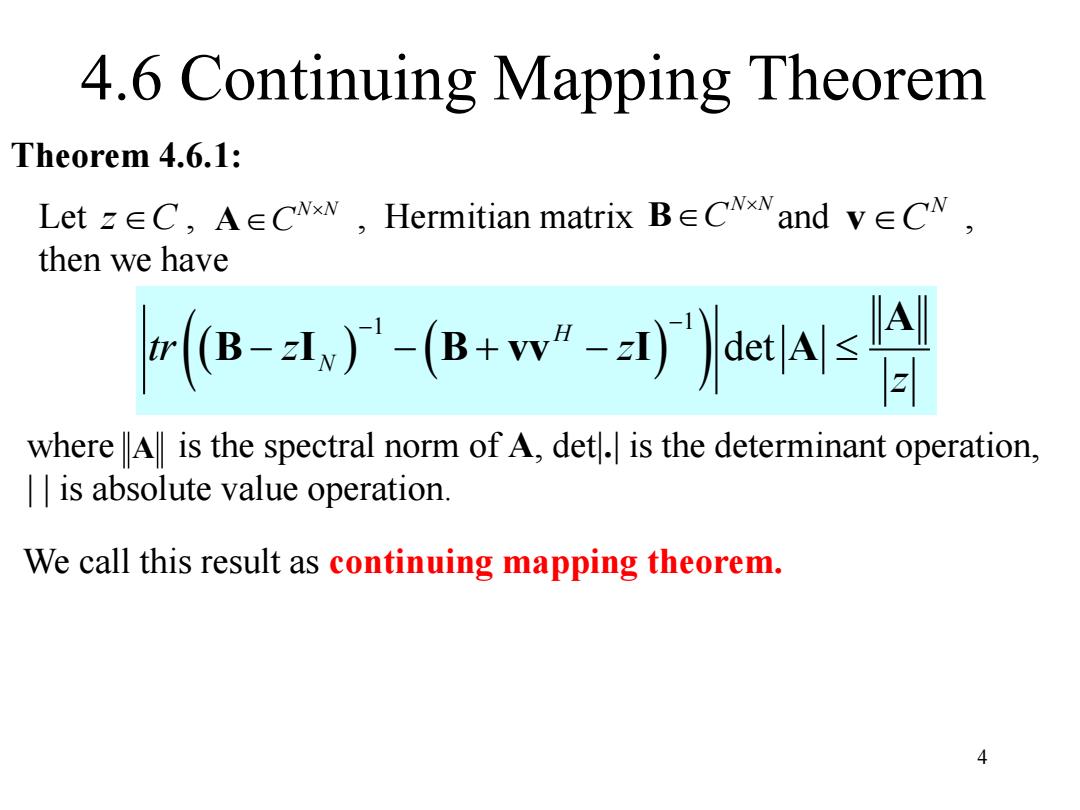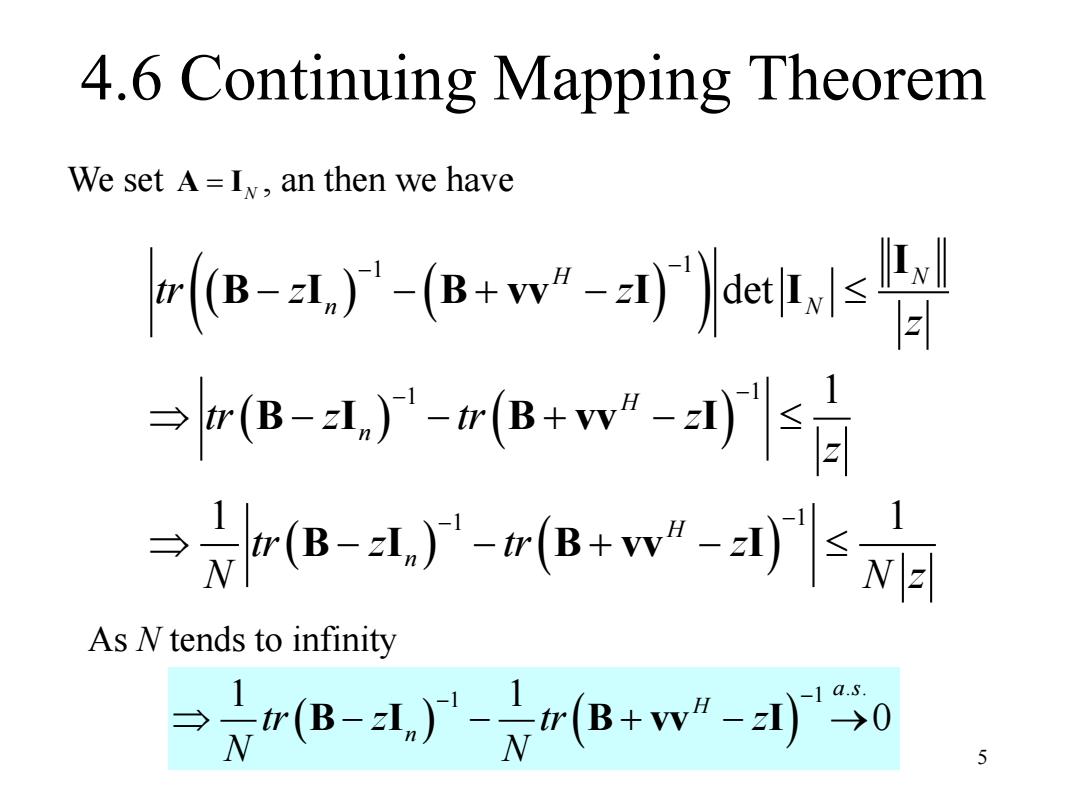
4.Asymptotic Analysis 1
4. Asymptotic Analysis 1

Overview 1.Continuing Mapping Theorem 2.Silverstein Theorem 2
Overview 2 1. Continuing Mapping Theorem 2. Silverstein Theorem

4.6 Continuing Mapping Theorem Recall: In Chapter 3,we introduced the result as In a single cell multi-user massive MIMO system,which consists of a BS equipped with n antennas and N single-antenna users.The channel matrix is H.When MMSE is used,for the user k,the SINR can be written as: SINRINGE-→r(oLy+H)' =m(-2) Actually,this result is derived by Continuing Mapping Theorem
3 Recall: In Chapter 3, we introduced the result as : In a single cell multi-user massive MIMO system, which consists of a BS equipped with n antennas and N single-antenna users. The channel matrix is H. When MMSE is used, for the user k, the SINR can be written as: 4.6 Continuing Mapping Theorem 1 2 2 1 ( ) MMSE H k N SINR tr N m I HH Actually, this result is derived by Continuing Mapping Theorem

4.6 Continuing Mapping Theorem Theorem 4.6.1: Letz∈C,A∈Cxw,Hermitian matriⅸB∈CNxNand v∈Cw, then we have e-1广-ew-aNe where A is the spectral norm of A,det.is the determinant operation, is absolute value operation. We call this result as continuing mapping theorem. 4
4.6 Continuing Mapping Theorem 4 Let , , Hermitian matrix and , then we have N N C z C A N N C B N vC 1 1 det H N tr z z z A B I B vv I A where is the spectral norm of A A, det|.| is the determinant operation, | | is absolute value operation. Theorem 4.6.1: We call this result as continuing mapping theorem

4.6 Continuing Mapping Theorem We set A=Iv,an then we have ps-)/wyr]ae1uc →lrB-l)-rsw-目 →-厂B*w阳 As N tends to infinity =(B-1,)'-n(B+w-刘0 .S 5
5 4.6 Continuing Mapping Theorem We set , an then we have A I N 1 1 1 1 1 1 det 1 1 1 H N n N H n H n tr z z z tr z tr z z tr z tr z N N z I B I B vv I I B I B vv I B I B vv I . . 1 1 1 1 0 a s H n tr z tr z N N B I B vv I As N tends to infinity